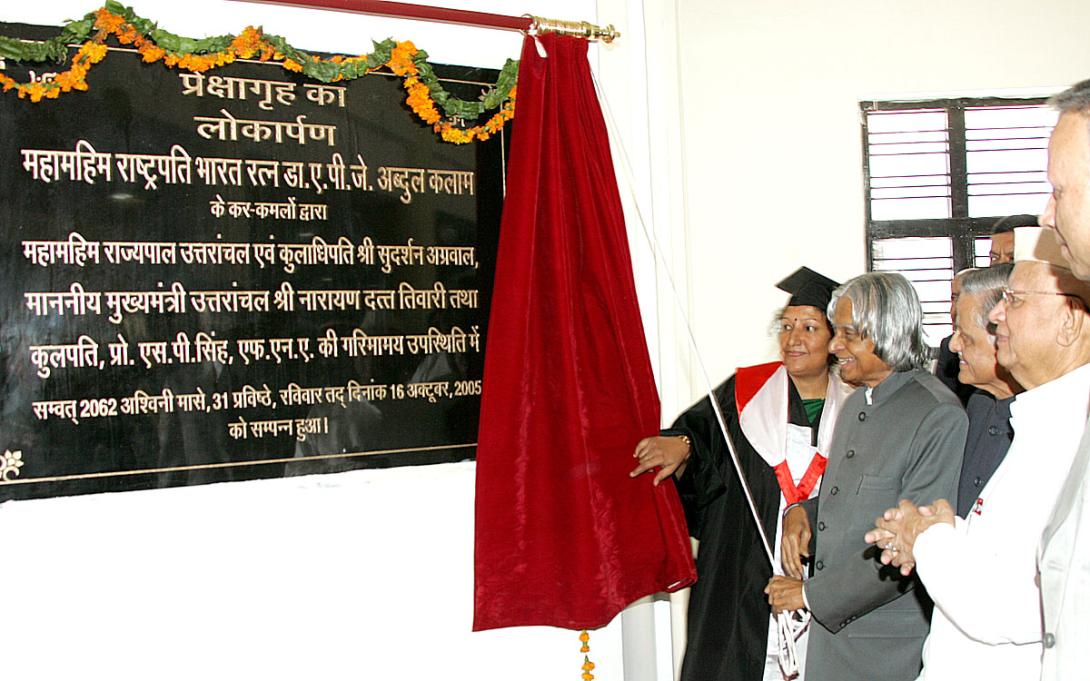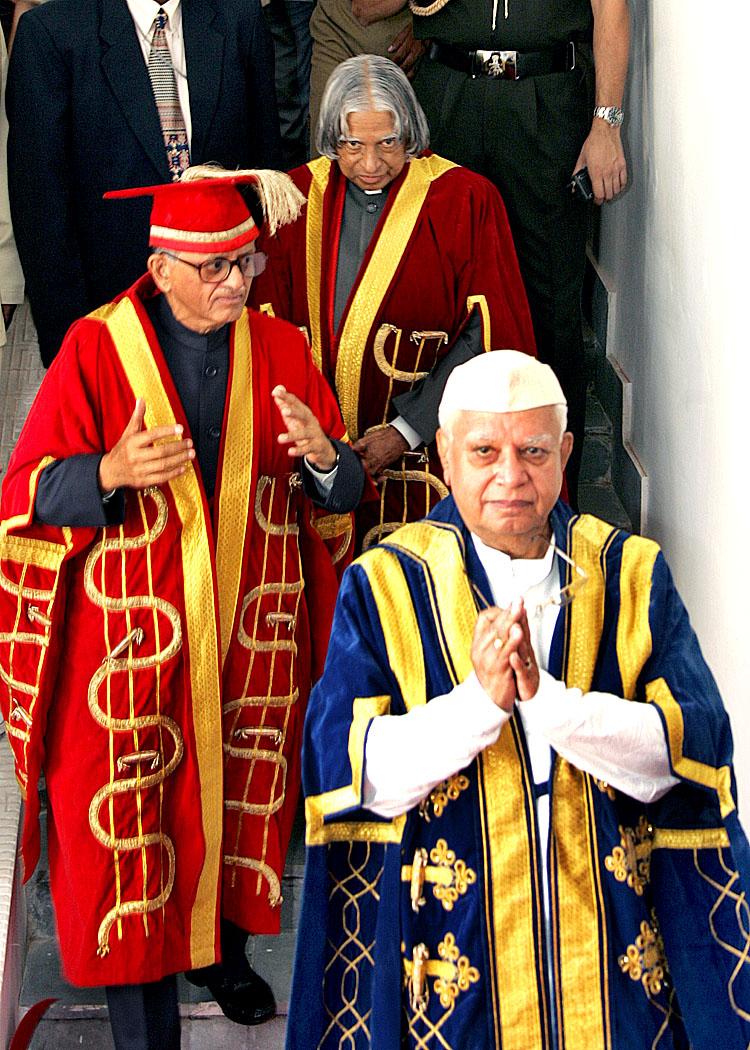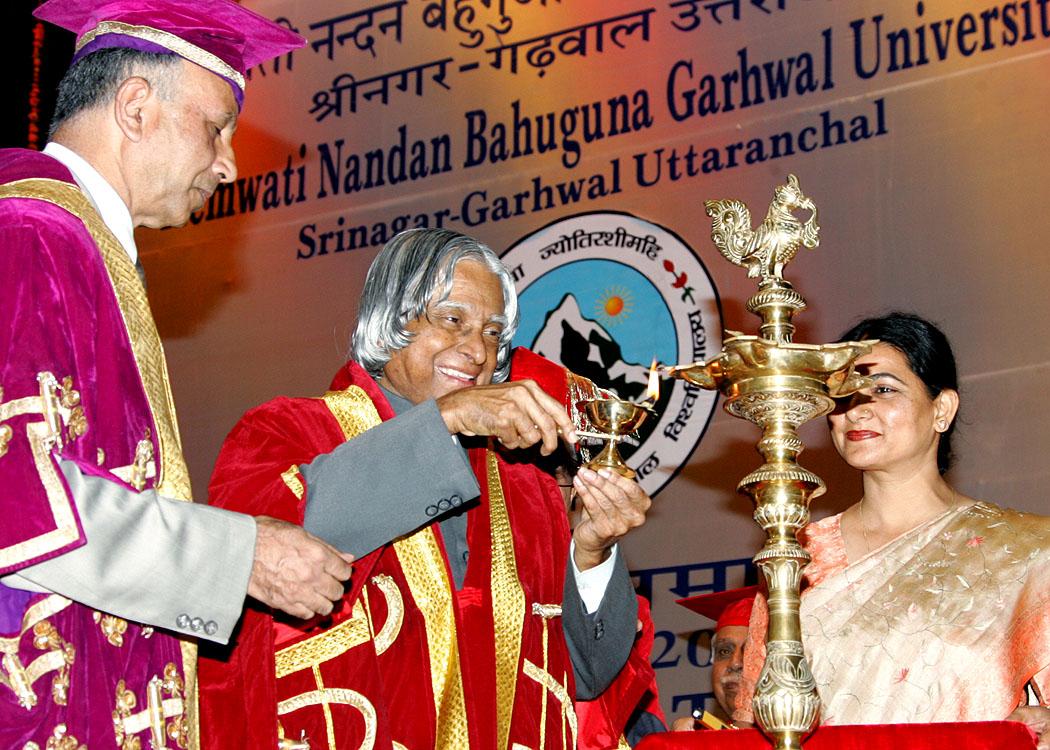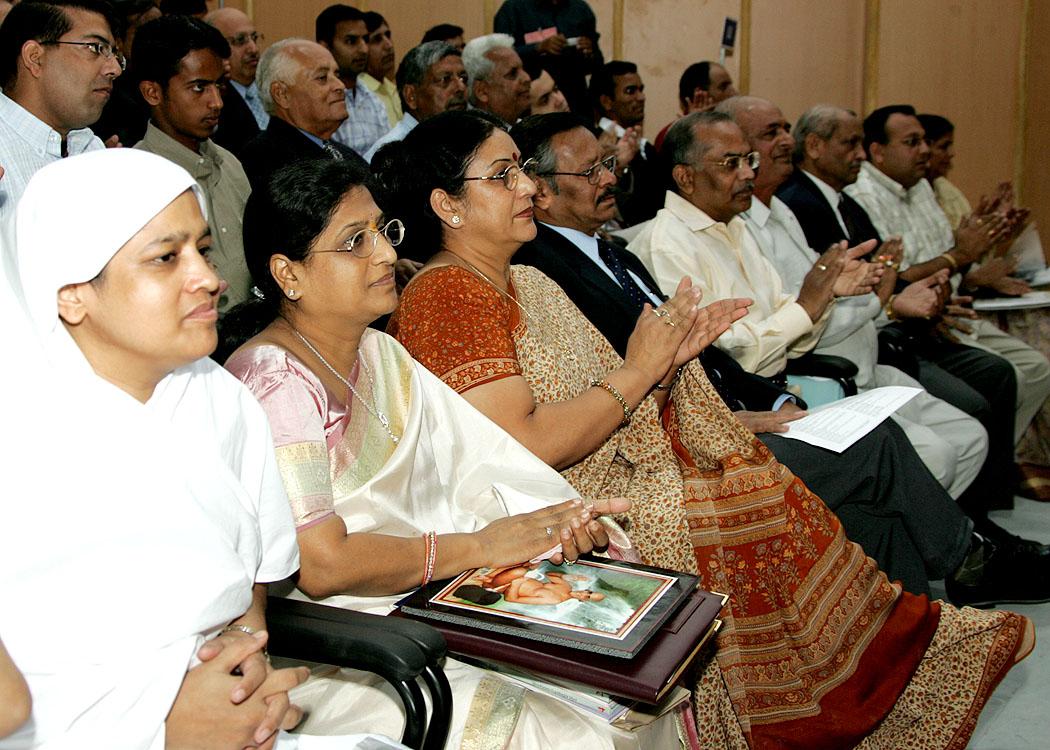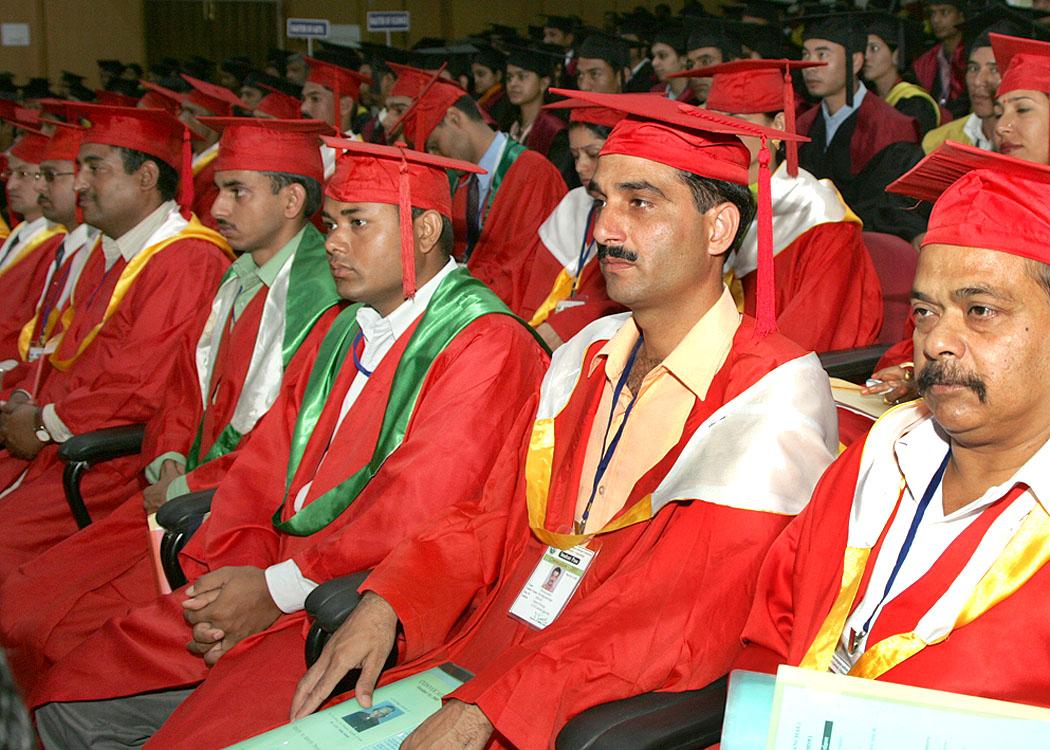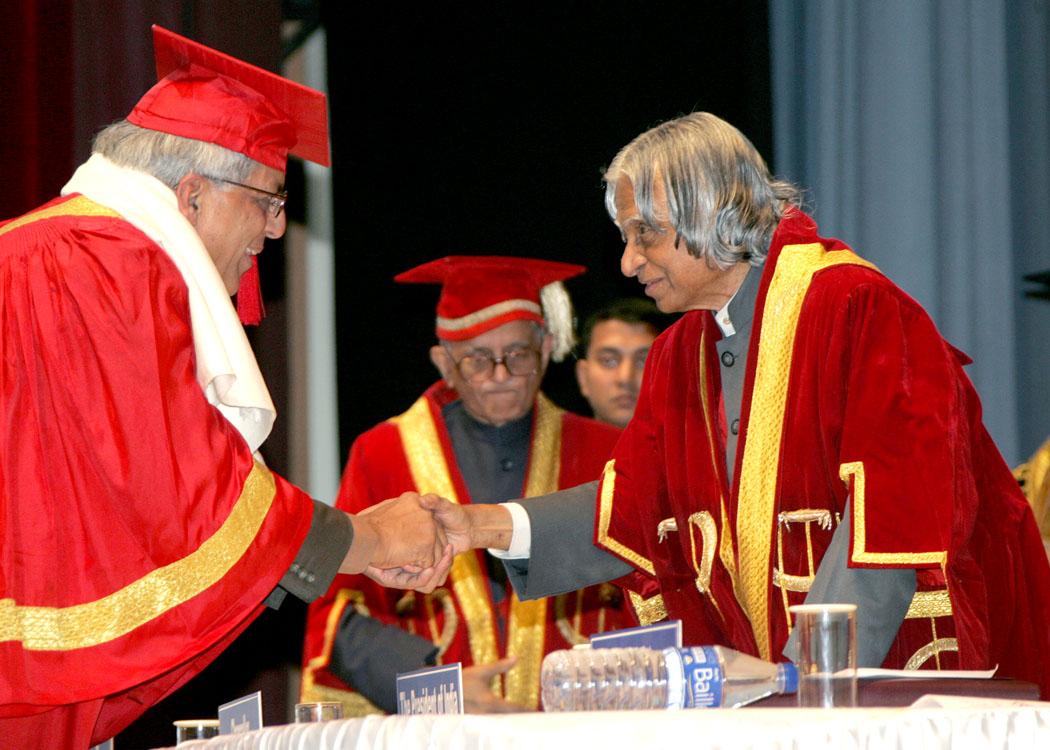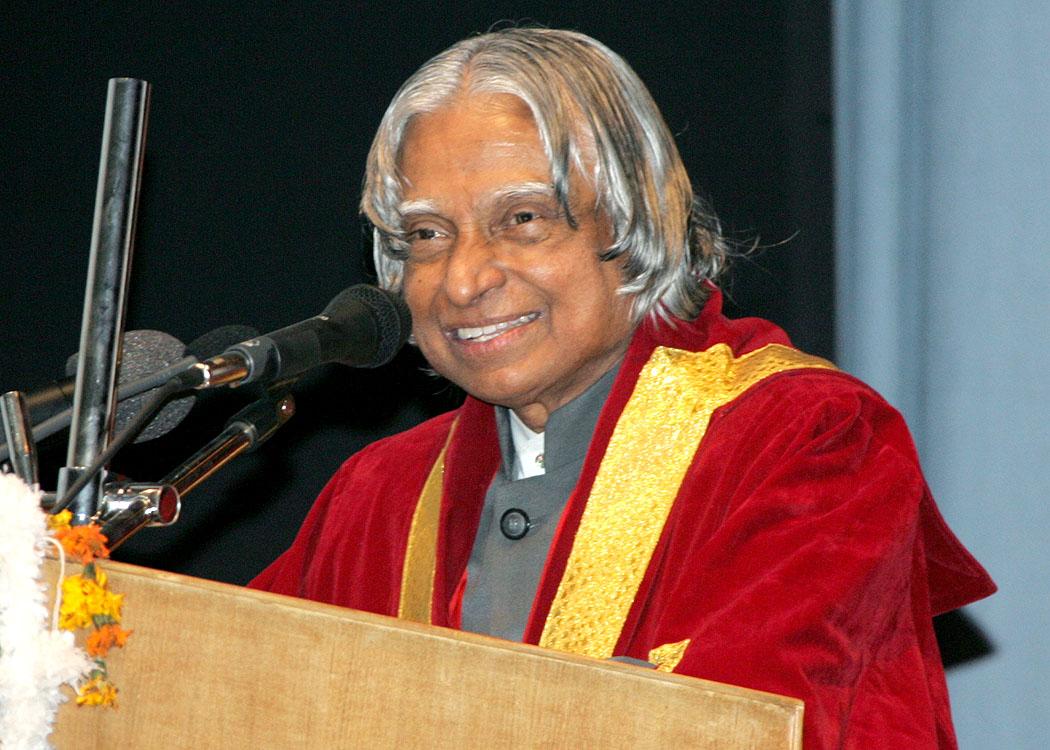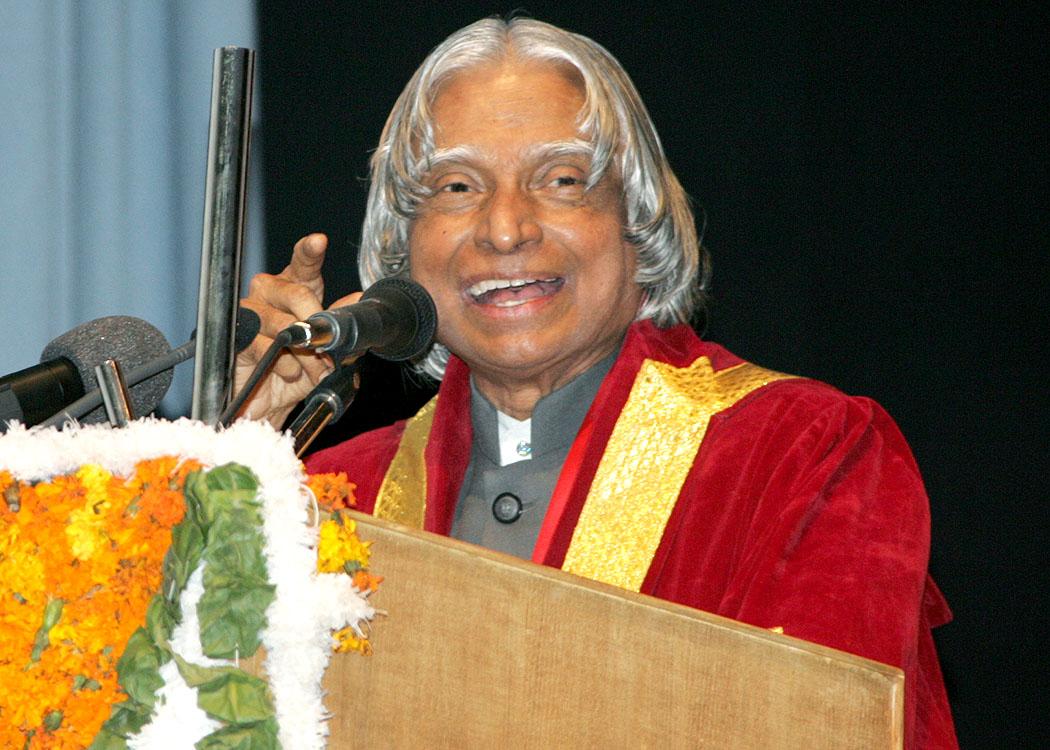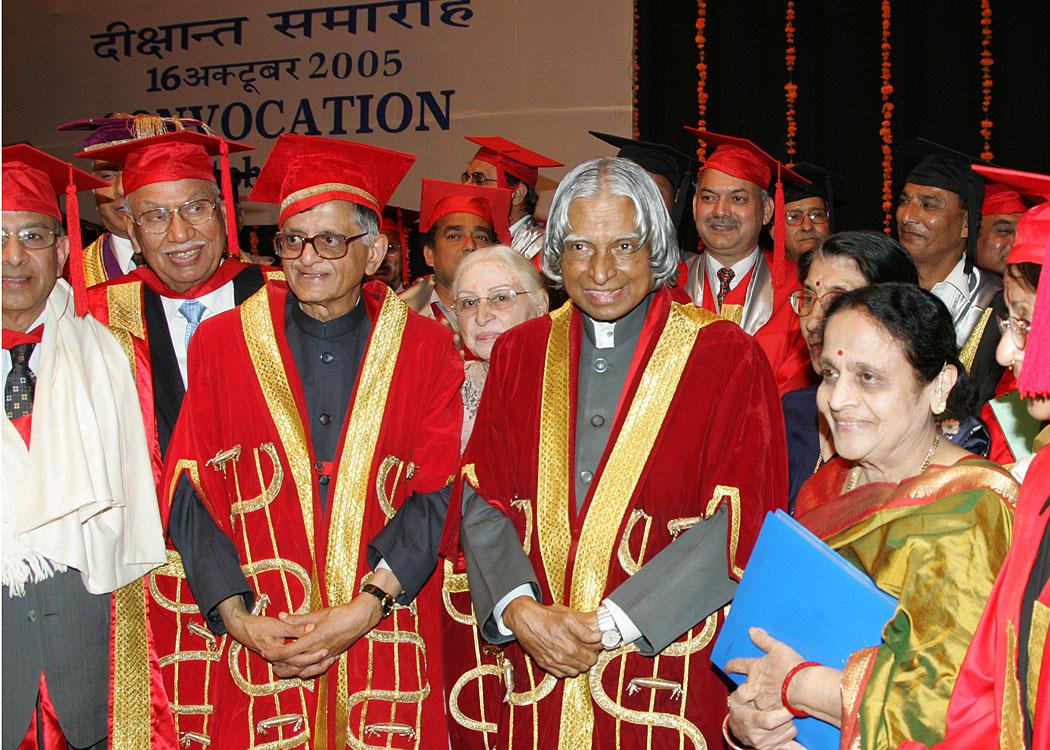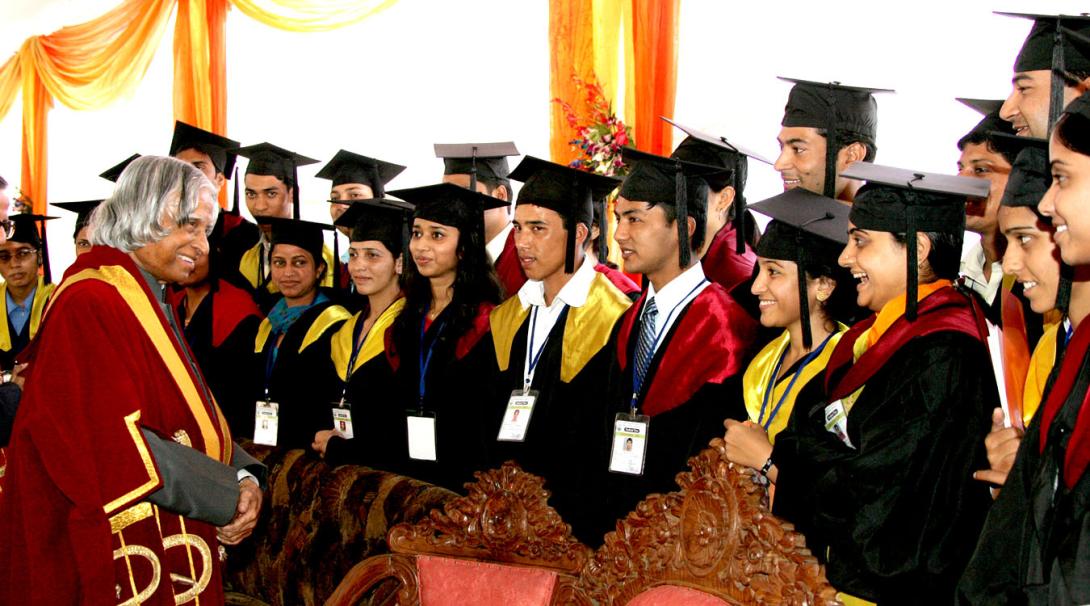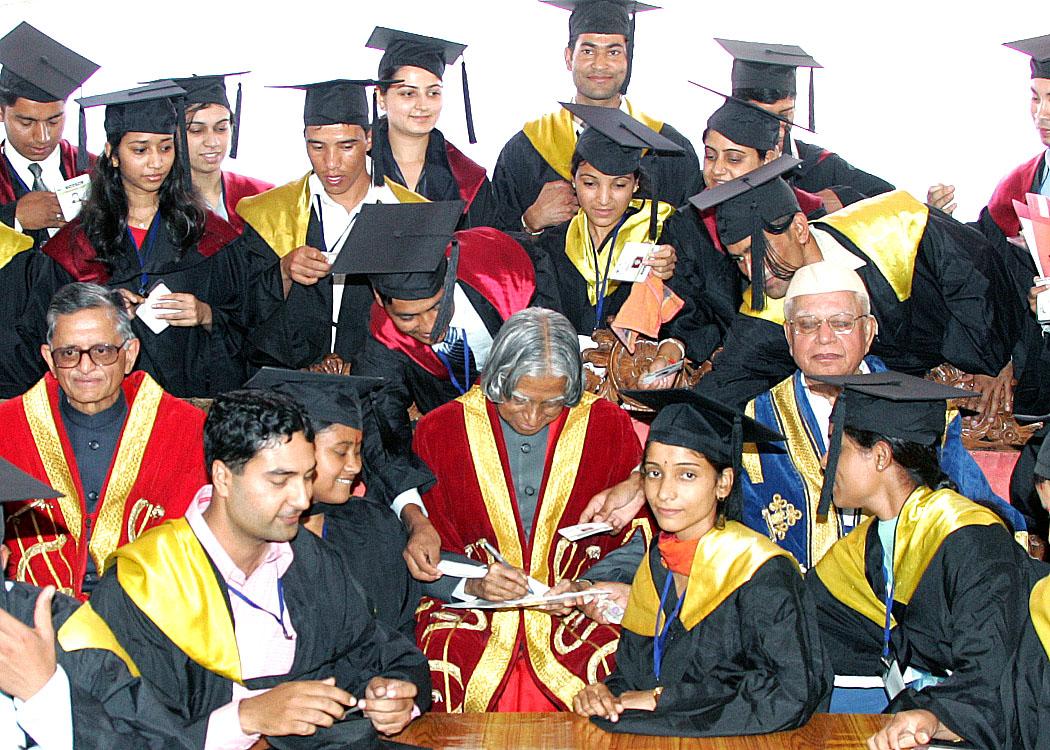Address At The Convocation Of Hemwati Nandan Bahuguna Garhwal University, Srinagar (Garhwal)
Srinagar (Garhwal), Uttaranchal : 16-10-2005
Capacity Building for National Development
I am delighted to participate in the 5th Convocation of Hemwati Nandan Bahuguna Garhwal University (HNBGU). I take this opportunity to congratulate all the teachers, students and staff of this University and all those who have contributed in promoting excellence in educational standards of this University during the last three decades. I am happy to know that this University was established for meeting the higher educational needs of this region as a result of the people's efforts. The University was named as Hemwati Nandan Bahuguna Garhwal University in1989, to mark the contribution of the national leader who had played a pivotal role in its establishment. HN Bahuguna, who hailed from this region, had been the pioneer in promoting many developmental programs in terms of improving health facilities and opening up educational horizons through the establishment of the Hill Development Ministry during his Chief Ministership. I would like to discuss on the topic : "Capacity building for national development."
Research and Teaching
Any University is judged by the level and extent of the research work it accomplishes. This sets in a regenerative cycle of excellence. Experience of research leads to quality teaching and quality teaching imparted to the young in turn enriches the research. Research brings transformation and development and also enhances the quality of education. Both the research and teaching are being carried out in the best traditions of HNBGU. Let me share with this important gathering on the two phase progress of science and technology in India.
Capacity Building
A good educational model is the need of the hour to ensure that the students grow to contribute towards the economic growth of a nation. Can we sow the seeds of capacity building among the students? There will be continuous innovation during the learning process. To realize this, special capacities are required to be built in education system for nurturing the students. The capacities which are required to be built are research and enquiry, creativity and innovation, use of high technology, entrepreneurial and moral leadership.
Research and enquiry: The 21st century is about the management of all the knowledge and information we have generated and the value addition we bring to it. We must give our students the skills with which they find a way through the sea of knowledge that we have created and continue with life long learning. Today, we have the ability, through technology, to really and truly teach ourselves to become the life-long learners. This is required for sustained economic development
Creativity and innovation: The management of knowledge in the 21st century is beyond the capacity of a single individual. The amount of information that we have around is overwhelming. The management of knowledge therefore must move out of the realm of the individual and shift into the realm of the networked groups. The students must learn how to manage knowledge collectively. When the information is networked the power and utility of the information grows as squared as predicted by Metcalfe's law. An information that is static does not grow. In the new digital economy information that is circulated creates innovation and contributes to national wealth.
Capacity to use high technology: Every student in our schools should learn to know how to use the latest technologies for aiding their learning process. Universities should equip themselves with adequate computing equipment, laboratory equipments, and Internet facilities and provide an environment for the students to enhance their learning ability. In the midst of all of the technological innovations and revolutions we cannot think that the role of the teachers will be diminished. In fact the teacher will become even more important and the whole world of education will become teacher assisted and would help in "tele-porting" the best teacher to every nook and corner of the countries and propagate the knowledge.
Entrepreneurship: The aptitude for entrepreneurship should be cultivated right from the beginning and in the university environment. We must teach our students to take calculated risks for the sake of larger gain, but within the ethos of good business. They should also cultivate a disposition to do things right. This capacity will enable them to take up challenging tasks later.
Moral leadership: Moral leadership involves two aspects. First it requires the ability to have compelling and powerful dreams or visions of human betterment. Moral leadership requires a disposition to do the right thing and influence others also to do right things.
In sum, inquiry, creativity, technology, entrepreneurial and moral leadership are the five capacities required to be built through the education process. If we develop in all our students these five capacities, we will produce "Autonomous Learner" a self-directed, self controlled, lifelong learner who will have the capacity to both, respect authority and at the same time is capable of questioning authority, in an appropriate manner. These are the leaders who would work together as a "Self-organizing Network" and transform any nation into a prosperous nation. The most important part of the education is to imbibe the confidence among the student is the spirit of "we can do it". These capacities will enable the students to meet the challenges of our national mission of transforming the nation into a developed country by 2020.
Now I would like to discuss some of the futuristic tasks which can be taken by the HNBGU.
Forest Cover
Recently, I was discussing with ISRO Chairman about the estimated forest cover of the country through IRS and the CARTOSAT data. Based on the satellite data study from 1987 to 2003, Forest Survey of India has estimated that the forest cover has increased from 6,47,000 sq. km to 6,88,000 sq. km. during this period. There is a marginal increase around 1%. Even though there is no reduction, we do not find substantial addition either.
What can be the mission of graduates trained from HNBGU? What can the University teach them? University must build capacities in them to achieve the goal of increasing present 20% forest cover of the country to 30% by the year 2015? When I am with you I would like to share my experience in Hyderabad during the period 1982-92.
Barren land transformed into a eco-friendly technology centre
I moved to DRDL (Defence Research & Development Laboratory), Hyderabad a missile laboratory in the year 1982. In three years time (1985-88), this laboratory gave the nation a missile technology center called RCI (Research Centre, Imarat) at Hyderabad. When we established RCI, it was a barren land of 2600 acres. In three years time, it became a state-of-the art laboratory with 3 lakh trees, plants and creepers to form a beautiful eco environment. This was possible since environmental upgradation was focused as part of the plan while creation of the laboratory. The next experience, I would like to give is about greening of Leh valley by DRDO at an altitude of 11500 feet.
Greening the Cold Desert
Leh valley is a cold desert. There is very little vegetation. After the Chinese aggression in 1962, DRDO took up the project of greening Leh Valley. DRDO, by developing appropriate local technologies could green several thousand acres of cold desert with poplar and willow trees which has brought prosperity to the whole valley. In the year 1992, DRDO adopted a village Nang at a height of 13500 feet to make it self sustainable village. Within a year, a plantation of 25 hectare was raised by involving villagers. This plantation has become the source of income for the villagers and their average income has gone up by four times. The HNBGU can consider such plantation in this region in collaboration with local villagers.
Now I would like to share with you the design of the Hill PURA.
Hill PURA
Physical Connectivity: Construction of hill roads and ropeways is an important element of Hill PURA. Each of the tourist spot in Uttaranchal will have a good link road to Dehradun or Rishikesh. Some times road transportation may be complemented with heli-transportation. Establishment of Community Sheds for storage of perishable hill produces so that they can be transported to the airbase with the fastest speed. The planning of physical connectivity should be such that from each place the tourists or the local citizen must be able to find an alternative route to reach the main town in case of problems in one of the routes.
Electronic Connectivity: All the hill villages in the state have to be linked with the District Headquarters through VSAT connectivities. Farmers and tour operators should be provided with broadcasting facilities through Satellite radios and HAMSAT network. Mobile cell phone with GPS facility may be provided for each tourist operator.
Knowledge Connectivity: HNBGU should facilitate the training of youth in modern agriculture, horticulture, agro-processing, application of technology for improving the productivity, storage and preservation systems and cost effective marketing, banking & financing systems through the District Headquarters. HNBGU should also work in the area of landslides prediction and fast clearance system of road blocks so that the tourists can move in Uttaranchal without difficulty.
Economic Connectivity: These three connectivities -physical, electronic and knowledge will motivate and enable the local population to create economic centres such as Cold Storage of vegetables, fruits and flowers and infrastructure for packaging and marketing for realizing the value added price. This will also provide alternative employment oriented schemes during non-agricultural season for people who are involved in agriculture and other activities. Creating capacity among the students of this region for undertaking economically oriented jobs should be the objective of HNBGU as a part of their contribution to rural development schemes. Now I would like to talk to you about Hill Agriculture, which can become a part of the curriculum of the HNBGU.
Special Characteristics of Hill Agriculture
As you are aware, the high altitude agriculture has special problems pertaining to diverse climatic conditions, terrain, availability of water, connectivity, mobility, marketability and the stress to the flora and fauna. Keeping these characteristics in mind the agriculture scientists have to work on products which will have high value at low volume and weight, water harvesting, water storage system and efficient use of water, special farming such as green house for off season cultivation of crops. Also, the HNBGU must consider designing low cost high efficiency mechanized equipments which can be used by the farmers in the high altitude conditions. In this background, I would like to discuss some of the areas in which the HNBGU can directly help the farmers of Uttaranchal.
Agriculture
The HNBGU can concentrate on the technologies pertaining to rice, maize, pulses, oil seeds etc. These are mainly the food crops which can probably be consumed within the State wherever it is produced. Emphasis should be to make the State self-sufficient in food crops since the cost of transportation in the hills is high. While upgrading the technology, the University should not lose sight of traditional food crops and the traditional methods of their production. Any improvement must be a super imposition on the acceptable and affordable methods of the local farmers. The improved technology should reach the remote areas of the State inhabited by the tribal people through the research and the extension centres and Krishi Vigyan Kendra setup by HNBGU. The HNBGU can also consider having model cultivation and demonstration cum training farm in these areas.
Potato: Uttaranchal can work towards giving the best variety of Potato to the country. The farmers are reluctant to grow these potatoes in inaccessible areas, as the capacity for transportation is limited by the head load or on animal. The HNBGU can consider conversion of high quality potato into processed products at the site of cultivation itself. Also, they can consider evolving low cost preservation and storage methods so that the farmers can store adequate quantity for market and their own use during off-season. You may like to collaborate with Central Potato Research Institute of ICAR in Himachal Pradesh.
Bio-fuel generation
India has nearly 63 million hectares of wasteland available in the country, out of which 33 million hectares of wasteland have been allotted for tree plantation. Certain multi-purpose bio-fuel plants can grow well in wasteland with very minimum input. Once cultivated, the crop has fifty years of life. Fruiting can take place in these plants in two years.
Bio-fuel plants grown in parts of the waste land, for example, 11 million hectares, can yield a revenue of approximately Rs. 20,000 crore a year and provide employment to over 12 million people both for plantation and running of the extraction plants. It will reduce the foreign exchange outflow paid for importing crude oil, the cost of which is continuously rising in the international market. The Bio-fuel is Carbon mono-oxide emission free. The oil can also be used for soap and in candle industries. De-oiled cake is a raw material for composting and the plantation is also good for honey production. We should absorb best of the technologies available worldwide and start commercial operation immediately. One time investment needed for bio-fuel plantation to production in 11 million hectares will be approximately Rs. 27000 Crores. The capital equipment and investment in plant and machinery can come from bank loans and private sector entrepreneurs. I have seen the progress in bio-fuel plant cultivation, preparation of seedlings, tissue culture and development of non-toxic hybrid varieties in Tamil Nadu Agricultural University, Coimbatore. They have also worked from processing of seeds to bio-fuel production by the indigenous design and development of bio-fuel plants. Anand Agriculture University at, Anand (Gujarat) has also made progress in the bio-fuel cultivation and processing in Gujarat.
Uttaranchal can determine the wasteland available and encourage the farmers by allotting the land for Jatropha Cultivation. HNBGU can play a leading role in Jatropha Cultivation and Conversion of seed into bio-fuel by introducing Bio-fuel technology courses and its related technical know how in the curriculum. Also they can assist the state government in formulating the bio-fuel policy in the state. For this mission, HNBGU can become the partners of TNAU, and AAU, Gujarat. Now I would like to talk to you about the Medicinal and Aromatic Plants in which Uttaranchal is rich.
Medicinal and Aromatic Plants: Value addition
I would like to recall the report of the sub-committee of Scientific Advisory Committee to the Cabinet (SAC-C) on herbal and natural products and flori-culture with Mrs. L.F. Poonawalla as chairperson. One of the major highlights of the report is short listing seven herbal plants (Aloe Vera, Rauwolfia serpentina, Centella asiatica, Bacopa Monnieri, Taxus baccata, Artemisia annua, Catharantus roseus) which are very important in view of their application as a drug, national and international demand and also economic benefits.
India is rich in herbs, germ plasm and micro organisms. Industrially developed countries are importing these bio-resources in the raw forms and adding value to them for export to developing countries including India as special seeds, medicines and bio-materials, fully protecting patents of these products. Instead of allowing export of such resources and importing value added products at high cost, India must add its own technology for conversion of such resources to value added products for domestic requirements and also for export. The bio-technology, bio-medical and bio-pharma departments of HNBGU can work together and aid the industry in Uttaranchal to produce value added products using biodiversity of this region.
Networking
I understand that HNBGU is in the process of developing a website. This can become a common platform for providing connectivity among nearly sixty thousand students in the three campuses namely Srinagar, Pauri and Badshahi Thaul Tehri and the alumni of HNBGU working in many parts of the country and abroad. The website can document the case studies and special achievements of the alumni and can assist new entrants in industry and enterprises. You could also include provision for the students to ask questions about their specific problems connected with education, further studies, research and creation of an enterprise in different places in Uttaranchal. This will lead to automatic generation of a database of problem solving and provide quality advice to students of HNBGU. This website can be used for creating awareness regarding the national issues and enable the alumni to give suggestions for tackling education issues of the University innovatively.
Conclusion
Every one of us has gone through the various phases of education from childhood to profession. A scene appears in front of me. When the child is empowered by the parents, at various phases of growth, the child transforms into a responsible citizen. When the teacher is empowered with knowledge and experience, good young human beings with value systems take shape. When individual or a team is empowered with technology, transformation to higher potential for achievement is assured. When the leader of any institution empowers his or her people, leaders are born who can change the nation in multiple areas. When the women are empowered, society with stability gets assured. When the political leaders of the nation empower the people through visionary policies, the prosperity of the nation is certain. Definitely HNBGU will give the right type of education for empowering the youth of this region in transforming Uttaranchal into a developed State.
My best wishes to all of you in your creative educational mission.
May God bless you.

